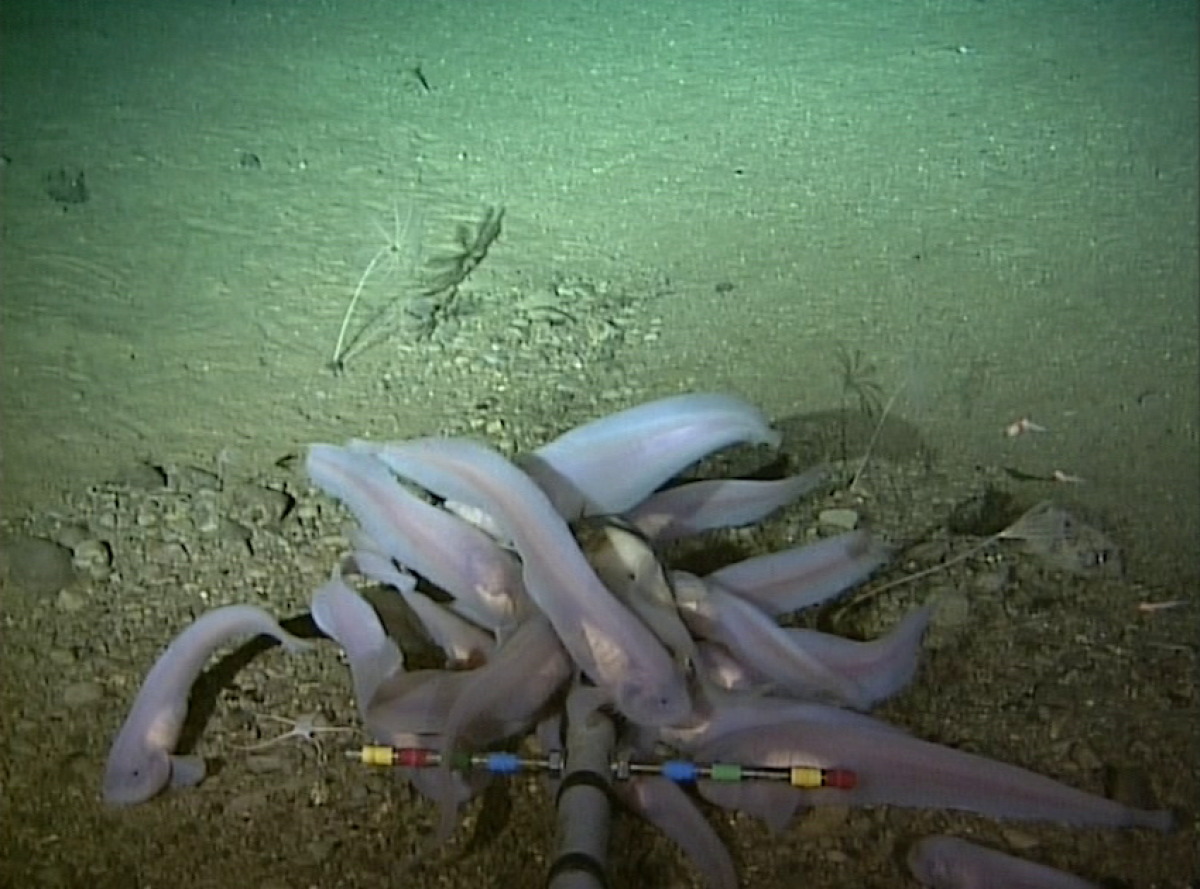Researchers have detected man-made mercury pollution at the bottom of the Mariana Trench—the deepest oceanic trench on the planet.
A team of scientists identified methylmercury—a toxic form of mercury that easily accumulates in some animals—in fish and crustaceans living in the trench, which reaches depths of around 36,000 feet.
Mercury can be released into the environment from natural sources, such as volcanic eruptions. However, much of the mercury introduced into the oceans comes from human activities, such as the burning of coal and petroleum, or metal-mining and production.
Mercury is a potent neurotoxin that can accumulate to harmful levels in some marine species. Humans have tripled the amount of the substance that is introduced into the atmosphere, or deposited to the surface of the Earth's land and oceans, every year.
For a study presented at the Goldschmidt Geochemistry conference, a team led by Joel Blum from the University of Michigan wanted to learn more about where human-derived mercury is transported in the oceans, in order to make better predictions about how changes in mercury emissions will affect levels of the substance in the marine environment, and in the fish that humans eat.
In the research, Blum and colleagues collected samples from fish and crustaceans at depths of 7 and 10 kilometers (around 23,000 and 33,000 feet respectively) in the Mariana Trench near the Philippines and the Kermadec trench off New Zealand, which reaches a depth of around 33,000 feet.
The scientists detected mercury in the species they sampled, with the particular chemical signature of the substance indicating that it had largely originated in the atmosphere, and fallen into the ocean via rainfall.
They were able to conclude this, because the chemical signature of the mercury—or "isotopic composition"—from the ocean floor, matched the reading from mercury found in animals living at depths of around 1,300-2,000 feet in the Central Pacific.
According to Blum, some of the mercury they detected would have come from natural sources, but most of it likely originated with human activities. The researcher said that human-derived mercury exceeds natural emission by about three-fold.

The team's analysis suggested that after being deposited into the upper parts of the ocean via rainfall, much of this mercury would have gradually sunk to the bottom of the trenches within the carcasses of dead fish and marine mammals. When the carcasses reach the ocean floor, they provide food for scavenger species of fish and crustaceans.
"The key finding is that mercury released by humans and deposited from the atmosphere to the surface of the oceans is being transported to the most remote and deepest environments in the ocean," Blum told Newsweek.
Previously, scientists knew the human-derived mercury could be found in some of the Earth's most remote land ecosystems, such as the Arctic and Antarctic. But it was not clear that mercury was present near the bottom of the Mariana and Kermadec Trenches.
Mercury can move up the food chain after being ingested by smaller species, that are in turn eaten by larger animals. This means that harmful levels can accumulate in larger animals. In fact, humans who eat large quantities of fish are in danger of mercury poisoning, which can lead to neurological damage, cardiovascular risks and other health effects, with developing fetuses being particularly vulnerable.
Another independent team of scientists, led by Ruoyu Sun from Tianjin University, China, also detected mercury in marine species living in the furthest depths of the Mariana Trench, according to more research presented at the Goldschmidt Geochemistry conference.
"We are now learning from these two studies that the effects of this deposition have spread throughout the ocean into the deep sea and the animals that live there, which is yet another indicator of the profound impact of modern human activities on the planet," Ken Rubin from the Department of Earth Sciences at the University of Hawaii, who was not involved in either team's research, said in a statement.
Uncommon Knowledge
Newsweek is committed to challenging conventional wisdom and finding connections in the search for common ground.
Newsweek is committed to challenging conventional wisdom and finding connections in the search for common ground.
About the writer
Aristos is a Newsweek science reporter with the London, U.K., bureau. He reports on science and health topics, including; animal, ... Read more
To read how Newsweek uses AI as a newsroom tool, Click here.








